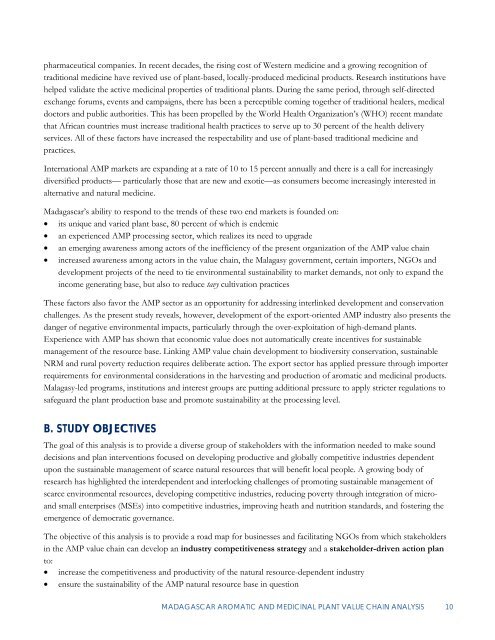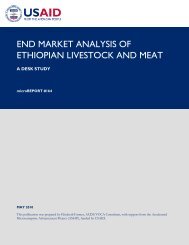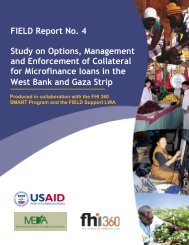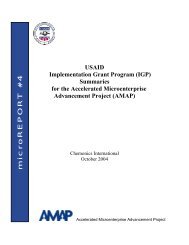Madagascar Aromatic and Medicinal Plants Value - Microlinks
Madagascar Aromatic and Medicinal Plants Value - Microlinks
Madagascar Aromatic and Medicinal Plants Value - Microlinks
You also want an ePaper? Increase the reach of your titles
YUMPU automatically turns print PDFs into web optimized ePapers that Google loves.
pharmaceutical companies. In recent decades, the rising cost of Western medicine <strong>and</strong> a growing recognition of<br />
traditional medicine have revived use of plant-based, locally-produced medicinal products. Research institutions have<br />
helped validate the active medicinal properties of traditional plants. During the same period, through self-directed<br />
exchange forums, events <strong>and</strong> campaigns, there has been a perceptible coming together of traditional healers, medical<br />
doctors <strong>and</strong> public authorities. This has been propelled by the World Health Organization’s (WHO) recent m<strong>and</strong>ate<br />
that African countries must increase traditional health practices to serve up to 30 percent of the health delivery<br />
services. All of these factors have increased the respectability <strong>and</strong> use of plant-based traditional medicine <strong>and</strong><br />
practices.<br />
International AMP markets are exp<strong>and</strong>ing at a rate of 10 to 15 percent annually <strong>and</strong> there is a call for increasingly<br />
diversified products— particularly those that are new <strong>and</strong> exotic—as consumers become increasingly interested in<br />
alternative <strong>and</strong> natural medicine.<br />
<strong>Madagascar</strong>’s ability to respond to the trends of these two end markets is founded on:<br />
• its unique <strong>and</strong> varied plant base, 80 percent of which is endemic<br />
• an experienced AMP processing sector, which realizes its need to upgrade<br />
• an emerging awareness among actors of the inefficiency of the present organization of the AMP value chain<br />
• increased awareness among actors in the value chain, the Malagasy government, certain importers, NGOs <strong>and</strong><br />
development projects of the need to tie environmental sustainability to market dem<strong>and</strong>s, not only to exp<strong>and</strong> the<br />
income generating base, but also to reduce tavy cultivation practices<br />
These factors also favor the AMP sector as an opportunity for addressing interlinked development <strong>and</strong> conservation<br />
challenges. As the present study reveals, however, development of the export-oriented AMP industry also presents the<br />
danger of negative environmental impacts, particularly through the over-exploitation of high-dem<strong>and</strong> plants.<br />
Experience with AMP has shown that economic value does not automatically create incentives for sustainable<br />
management of the resource base. Linking AMP value chain development to biodiversity conservation, sustainable<br />
NRM <strong>and</strong> rural poverty reduction requires deliberate action. The export sector has applied pressure through importer<br />
requirements for environmental considerations in the harvesting <strong>and</strong> production of aromatic <strong>and</strong> medicinal products.<br />
Malagasy-led programs, institutions <strong>and</strong> interest groups are putting additional pressure to apply stricter regulations to<br />
safeguard the plant production base <strong>and</strong> promote sustainability at the processing level.<br />
B. STUDY OBJECTIVES<br />
The goal of this analysis is to provide a diverse group of stakeholders with the information needed to make sound<br />
decisions <strong>and</strong> plan interventions focused on developing productive <strong>and</strong> globally competitive industries dependent<br />
upon the sustainable management of scarce natural resources that will benefit local people. A growing body of<br />
research has highlighted the interdependent <strong>and</strong> interlocking challenges of promoting sustainable management of<br />
scarce environmental resources, developing competitive industries, reducing poverty through integration of micro-<br />
<strong>and</strong> small enterprises (MSEs) into competitive industries, improving heath <strong>and</strong> nutrition st<strong>and</strong>ards, <strong>and</strong> fostering the<br />
emergence of democratic governance.<br />
The objective of this analysis is to provide a road map for businesses <strong>and</strong> facilitating NGOs from which stakeholders<br />
in the AMP value chain can develop an industry competitiveness strategy <strong>and</strong> a stakeholder-driven action plan<br />
to:<br />
• increase the competitiveness <strong>and</strong> productivity of the natural resource-dependent industry<br />
• ensure the sustainability of the AMP natural resource base in question<br />
MADAGASCAR AROMATIC AND MEDICINAL PLANT VALUE CHAIN ANALYSIS 10





